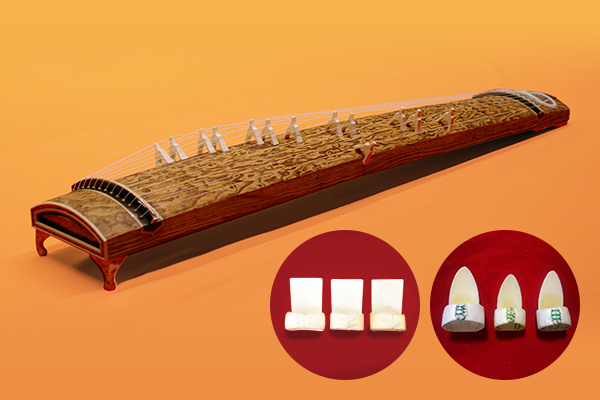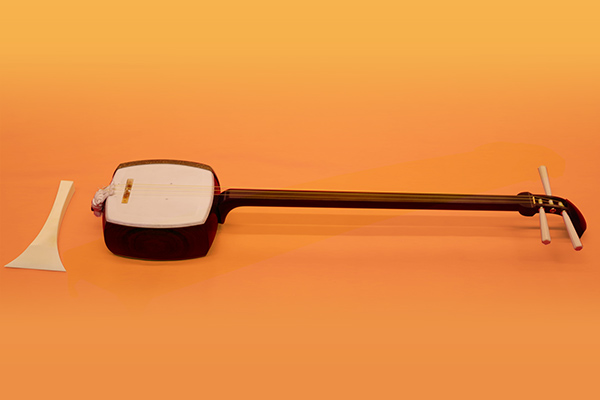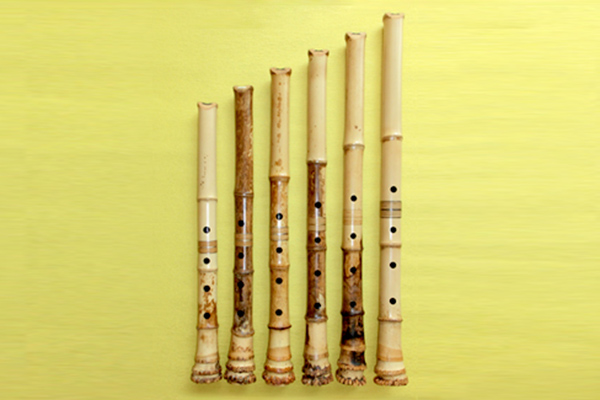Crafted from a hollowed piece of paulownia wood, this long zither has thirteen strings, each supported by a moveable bridge. Strings are plucked with picks worn on the first three fingers of the right hand while the left hand is used to vary elements such as pitch and tone. Musicians of the Ikuta tradition use square shaped picks, while those of the Yamada school’s are rounded.

Made of woods such as Chinese quince, rosewood and red sandalwood, this three string fretless lute has a small bridge placed on its skin covered body. The strings are plucked with a large plectrum held in the right hand while the fingers of the left hand control pitch and tone through pressing and various sliding techniques on the neck. Instruments are categorized by size as either futozao - thick necked, chūzao - medium thickness, or hosozao - thin necked. Ikuta players use chūzao instruments while Yamada musicians generally play the hosozao.

This end blown flute is made from the root and lower part of the madake bamboo plant. As each instrument is crafted by hand, all flutes are slightly different in sound quality. The shakuhachi has a range of about two and a half octaves. Simply constructed with only 5 finger holes, it produces a surprisingly wide palette of tones.
